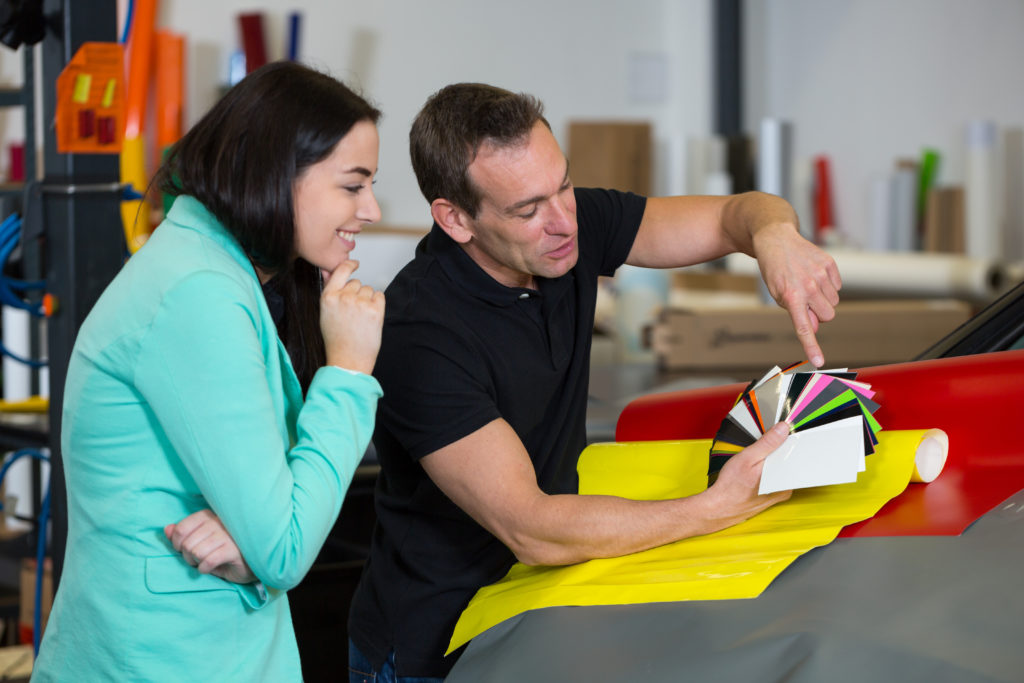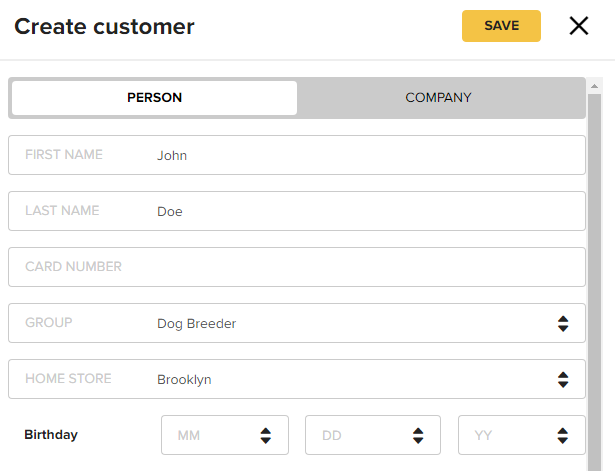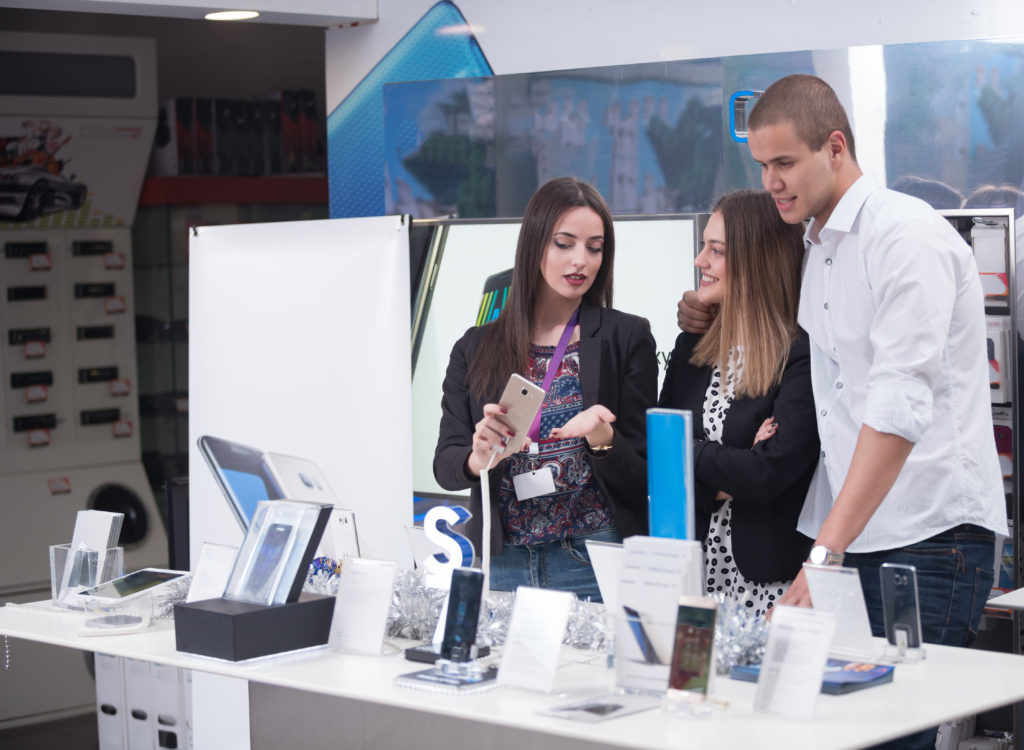Proving the Point
Don’t believe us? Here are some important statistics:- Only 19.7% of apparel and accessories were sold online so far in 2018.
- Only 2.8% of all food purchases were made online so far in 2018.
- While the total retail sales so far in 2018 have totaled over 5 trillion dollars, only 526 billion of that so far has been from online sales.
If your retail store has been struggling to compete with mega e-commerce sites like Amazon or Overstock, you do have techniques that you can use to stay relevant in today’s industry. Here are some ways that you can keep your brick-and-mortar successful even in the age of online shopping.
Present Convenience from a New Angle
One of the big selling points for online shopping is convenience. Shoppers love the fact that they don’t have to leave their home to get their errands done at once. But the sacrifice for that convenience is the wait and risk that comes after. Shipping can take longer than expected due to weather or unforeseen mistakes. There’s always the chance that the item ordered won’t be the item sent. And then there’s the worry that what looked right on the screen has some detail in person that you hate.One way that retail store owners can entice shoppers is to join them in-person is to capitalize on the instant gratification of shopping at a brick-and-mortar location. Customers get their items right away – no waiting on shipping – and they have more control over what they are buying.
This is one reason that in-person holiday sales are so successful. Consumers don’t want to wait for slow holiday-season shipping for gifts that they need right away for parties. Capitalize on any situation in which a customer may be in a rush and remind them that shopping in your store means they go home with the product today.
Another way you can attack convenience from a new angle is to offer immediate or same-day deliveries in your local area. There are tons of third-party services that you can partner with, especially in urban areas, such as Postmates, Uber Eats, and so much more. However, doing this definitely requires a very careful inventory system, as you’ll be dealing with orders coming in as well as in-person sales taking inventory off the shelves. That is why a system like Erply, which offers up-to-the-second inventory counts, is vital if you intend to do this.
Alternatively, some Erply clients operate stores without any physical inventory. This is a surefire way to create a unique, exclusive customer experience, but definitely requires the support of a dedicated inventory management system.
Provide More Than Products
One thing that online stores can’t offer is a personalized service that goes above and beyond the virtual experience. For example, a clothing retailer can offer free or discounted alterations for customers who spend a certain amount of money – and that’s a service that requires the customer be there in person to get the perfect fit. Customer insights are the backbone to a strong customer experience. A good car salesman will use specific personal information, such as a customer’s needs or purchase budget, and use that information to suggest comparable options. Online stores may offer an “items suggested based on your purchase” feature, but those features lack the human touch of a well-informed salesperson.

In addition to beefing up your products with expert knowledge like that, you can also get creative and create an
experiential retail
experience. Consider doing a product demonstration to keep your customers informed, or throw a fashion show featuring the season’s newest designer shoes at your fashion retail location. Bringing customers in for an event increases the chance of them making a purchase in-store rather than online.
Customization and Exclusivity are Key
In-store product customization is a great way to draw customers to your store with a high chance of converting visitors into customers. While customization can lead to extremely satisfying experiential retail experiences, you don’t have to go all-out to create an interesting customer experience. Some jewelry stores allow customers to create their own charm bracelets in-store, letting them leave with a perfectly personalized item as well as some fun memories of picking out the charms they loved the most. Online shopping may be convenient, but experiential shopping can really hit home for customers who enjoy an aspect of control in their shopping experience.A similar idea found in
research conducted
by Michigan State University is the idea of the “market of one”. Consumers today want to feel as though a company is marketing specifically to them, and that their unique needs are met. Those needs are often met through exclusivity.
In-store exclusivity is a common way for retailers to draw customers into their stores, especially during the holiday season. Customers that are offered something very valuable to them, such as a deep discount, or free items when buying something else, are motivated to abandon the convenience of online shopping.
A unique way to create in-store exclusiveness is to follow the footsteps of brands that focus on pop-up retail locations. These limited-time-only storefronts open quickly, sell out of the stock they brought to the store, and then close and move on. This system combined experiential retail and exclusivity to drive customers away from the world of online shopping and become part of something limited and unique.
Integrate Your Digital and Brick-and-Mortar Stores
Quality of service has a huge impact on customers deciding to return to your shop. Digitizing your brick-and-mortar shop can create a smoother experience and lead to more consistent customer purchases. Remember that experiential shopping doesn’t just
have to be about creativity, you might find that tools used to streamline your workflow will benefit your store all the same.
Consider having scannable QR codes on your price tags in stores. Customers can scan those QR codes on their smartphones to be directed to reviews and information about that product. At clothing stores like Old Navy and Gap, customers are encouraged to fill out profiles that list options such as color and style preference, These profiles retain records of their past orders and can be used by staff to help a customer find the right item based on what is already in their closet. This feature is commonly offered online, but having it available in-store assures your customers that they’re not missing out on anything by choosing to not shop online.

A point of sale can help you and your employees run day-to-day operations smoother than ever. Your workers can help customers by searching inventory numbers from a POS device (no more running to the back to check for a different size!), or by looking up a customer shopping account to find out if they have any special discounts or points to redeem within the loyalty program. Erply’s easy-to-use resource management tools can help create stronger customer engagement with customer info cards. The POS is extremely intuitive as well, so your employees won’t be fumbling around when looking up a customer’s recent sales.
Focus on Amazing Customer Service
Truly zero in on amazing customer service. Shopping online may be easy and affordable, but it has one huge drawback: consumers are often on their own. Reviews, comparison shopping, and emailing or chatting with a remote customer service agent, can only do so much. Your employees put the experience in experiential retail -- it’s important to understand the value they bring to your store.
By ensuring that your team is focused on giving great customer service, you’ll also build customer loyalty. Consumers do value service that goes above and beyond what they’ve come to expect, and they will sacrifice convenience in order to have a great experience in the store. Instead of setting up a warehouse-style display of all of their stock, many stores are opting for a more boutique-style setting, displaying products like art while also creating a space that’s easy to deliver top-notch service.
How Erply Can Help Your Retail Location Stick Aroun
d
The key focus is on how you’ll go about turning your brick-and-mortar store into a true experience for the customer. Experiential retail is nonexistent without proper support channels. Erply POS can be used to create loyalty programs and exclusive customer discounts that will attract new customers to your store. The streamlined workflow and seamless customer experience that comes with using Erply will make sure those customers keep coming back for more/If you would like to learn more about Erply and how it can help your retail location grow stronger, contact us today.